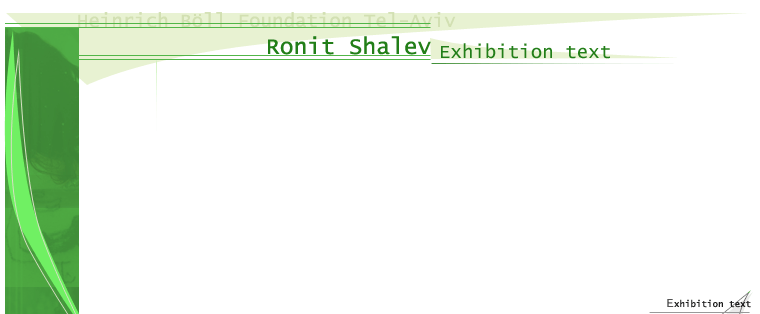


"When This You See, Remember Me"*
Ronit Shalev embroiders in pencil. The "x" signs mark the expected place and pattern, while functioning as instructions for embroidery, as a mark of the needle insertion to come.
The images are taken from pattern books of women's embroidery. The works of art correspond with a long tradition of women's embroidery that combines key sentences from the world of a housewife with homely-feminine images. The embroideries served to decorate the home while passing on messages regarding the woman's place, her ambitions and the world surrounding her. They were performed in a regular format - regular patterns and signs creating an identification and a collective memory of feminine identity mediated through symbols, sentences and cliches.
The sentences, taken in part from guidance and instruction books, reflect the territory in which the woman conducts her life and the possible action strategies open to her in her home. The fact that these are cliches - banal images, pre-given and pre-known, produces them as a representation of the world that cannot be undermined. The embroideries themselves are usually hung in the kitchen, the bedroom and the living-room, indicating that beyond decoration they are also a warning, a ruling and a reminder.
The embroidery itself is a time-out from the housework, a time of rest, in which the woman sits and continues to appear busy, working for her home. The obsession to excel as a housewife, a woman and a wife as it is manifested in the texts integrated in the embroideries are closely related to the level of obsession, time and investment required in order to produce the embroideries.
Ronit Shalev produces a recurring ritual of a feminine activity known to her. But she does not embroider - she marks. This work of marking "x" in color, which is no less exhausting and obsessive than the embroidery itself, testifies to being purposeless and profitless. The pencil marks fade, the color differences are pale (unlike the material richness of the glowing embroidery threads), and the image is barely formed.
The "material-lacking" surface, the "kitsch" image and the sentences taken from instruction books for embroidering women stand in complete contradiction to a number of messages integrated in the works of art as "warning signals". These messages contradict the tranquility of the "housewife" and undermine the homely work described in the "embroideries". The messages are used as communication, as a feminine voice subverting beneath the eminent link between the idea of the perfect home and the idea of the perfect woman - girl, while expressing a cry for help and an undermining of the existing system. But the fact that these messages are integrated-hidden-repressed in a decorative stylistic sequence and on a pale surface indicates a dual stance regarding their ability to act and to change the living space portrayed in the "embroideries".
Tal Ben-Tzvi
 |
|
|||
|
|
|
|
||
|
|
|
 |
|
|
|
|
|
|||
|
|
 |
|
||